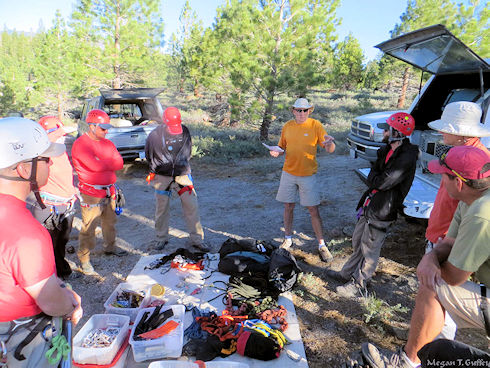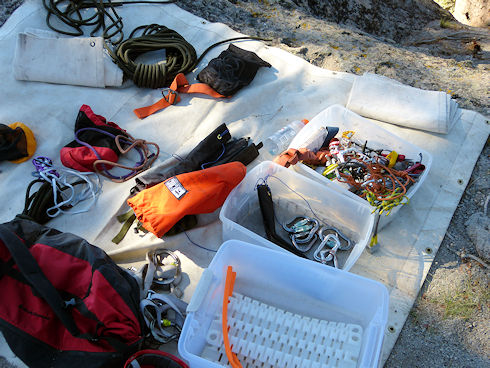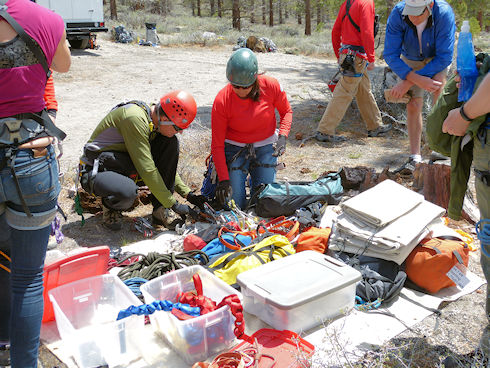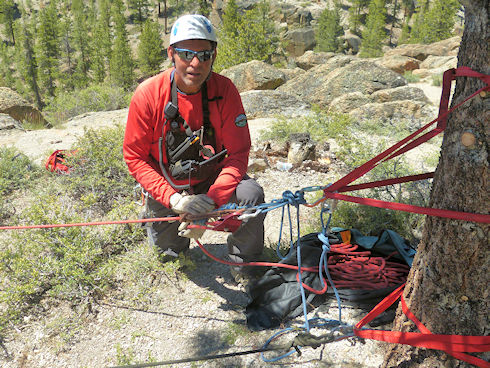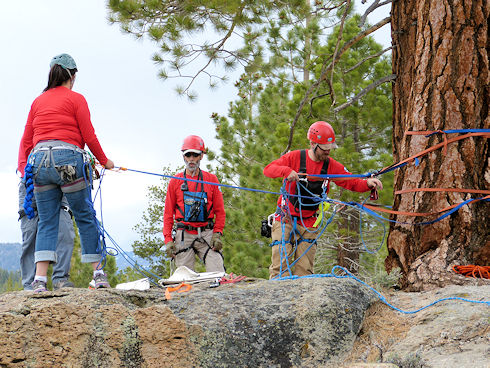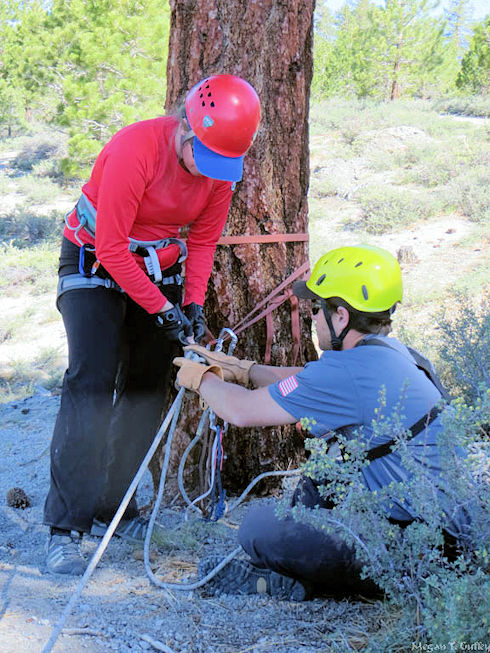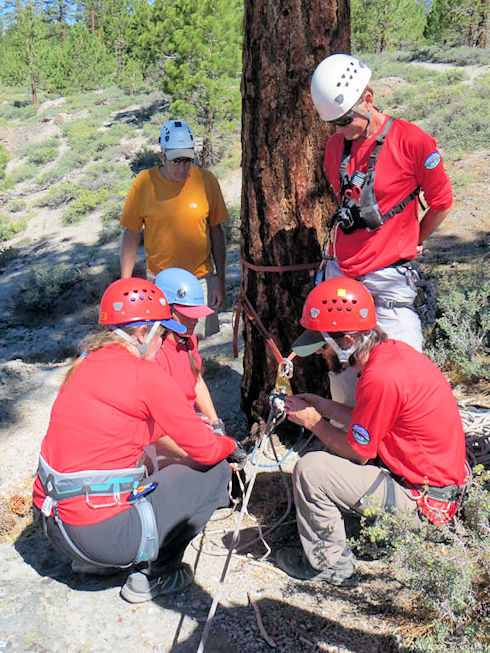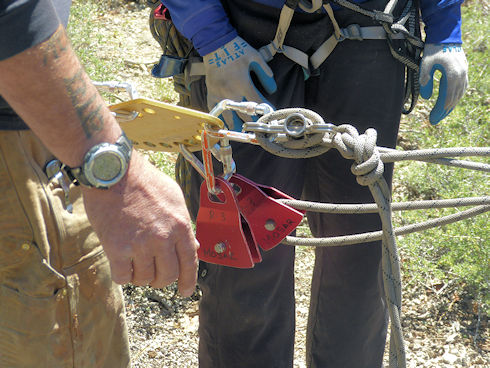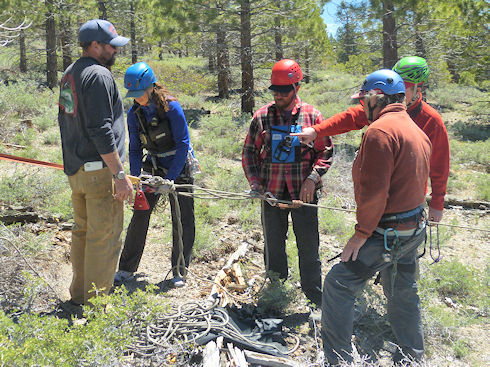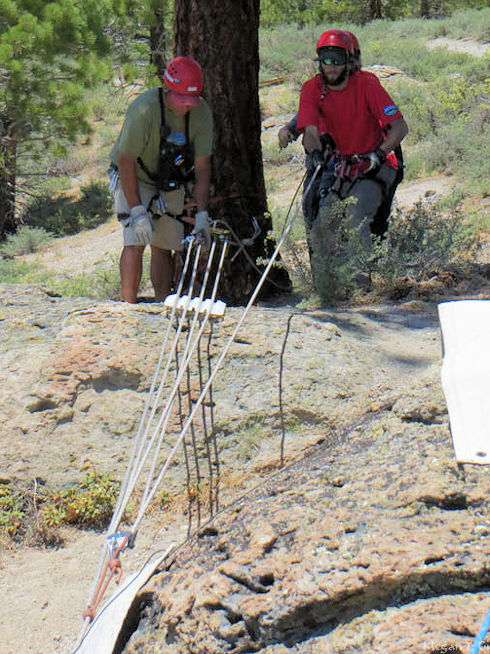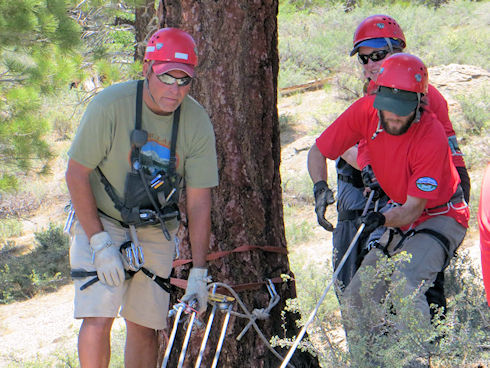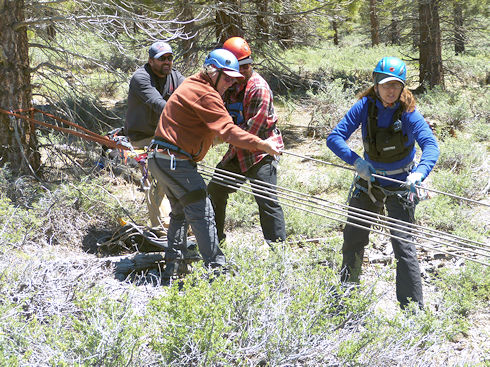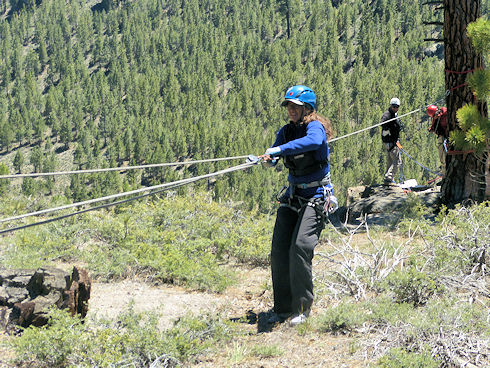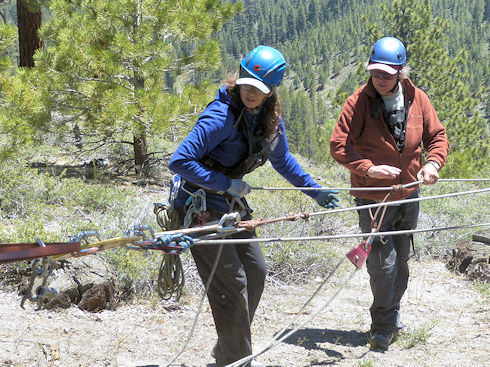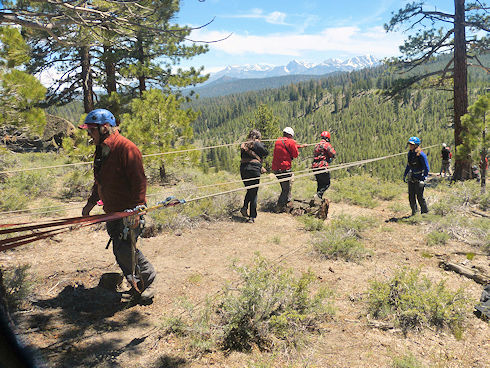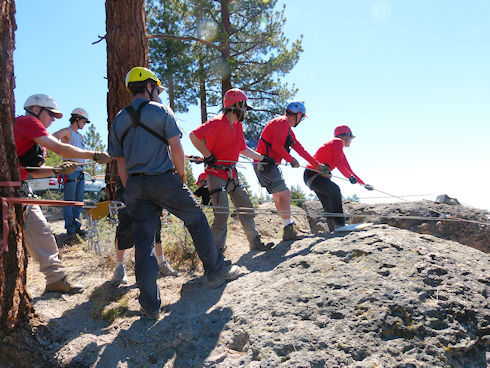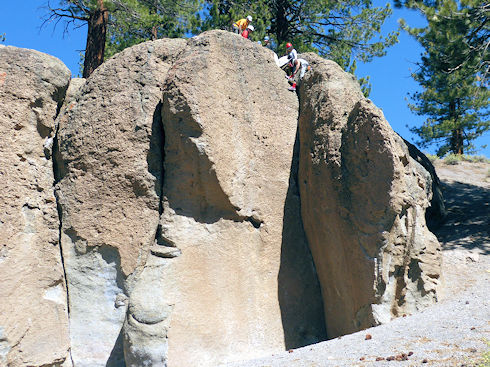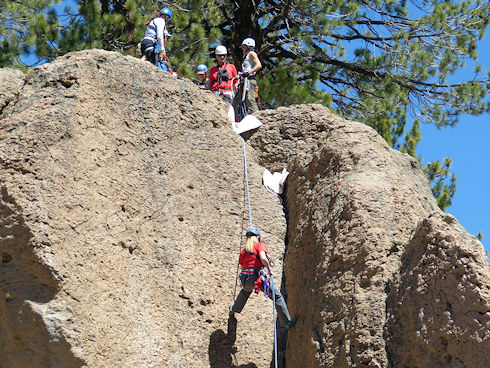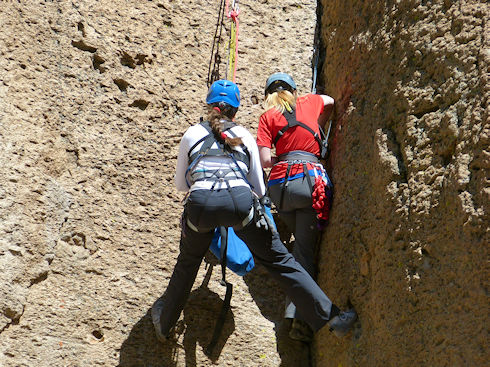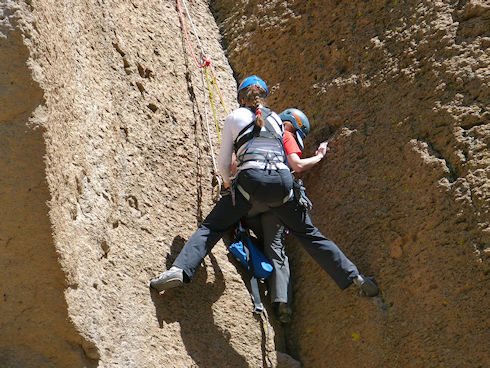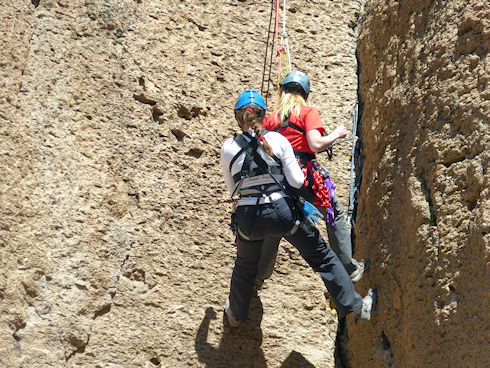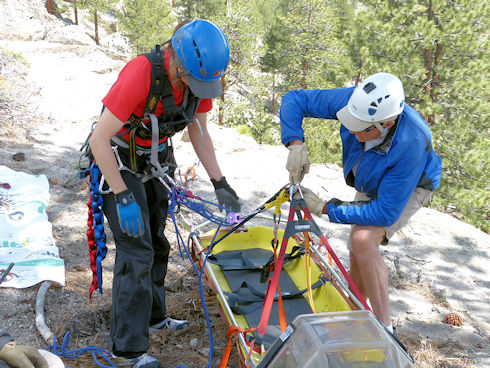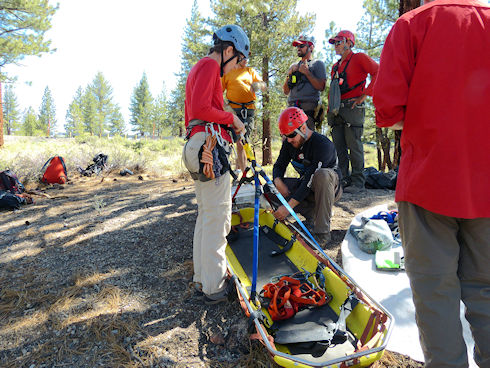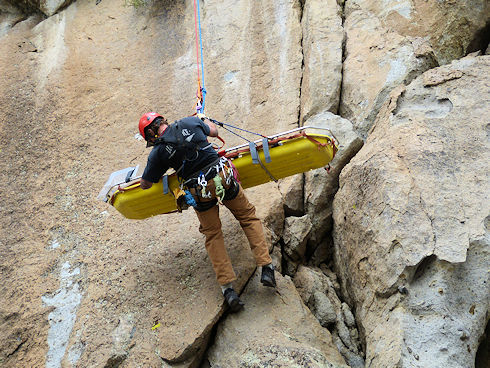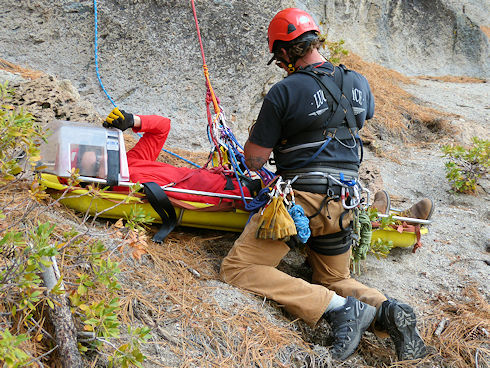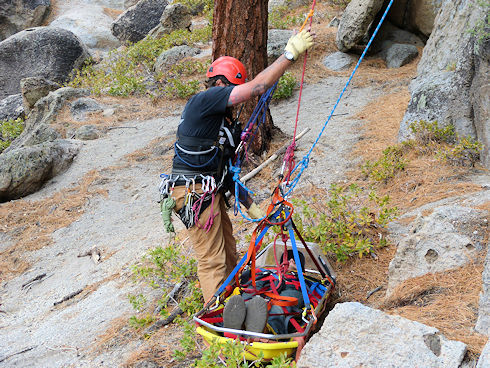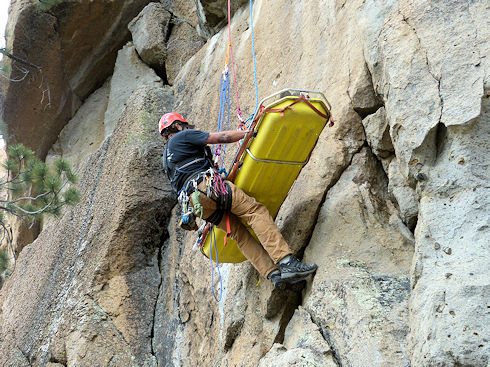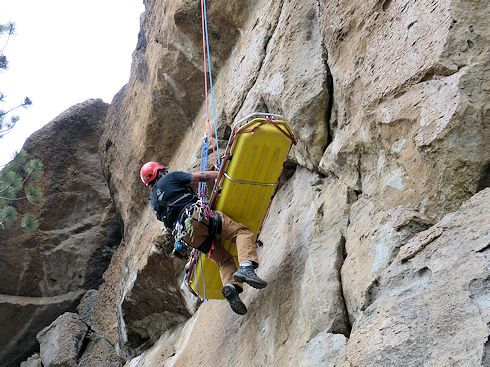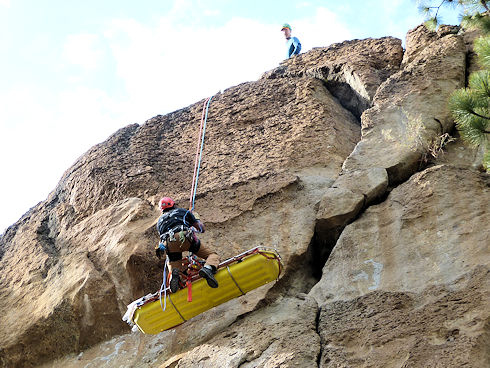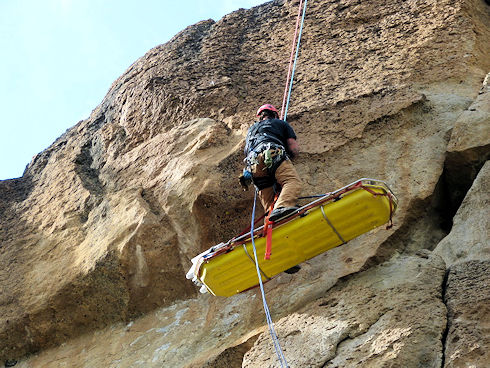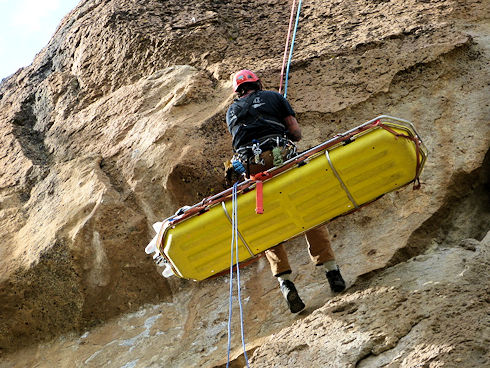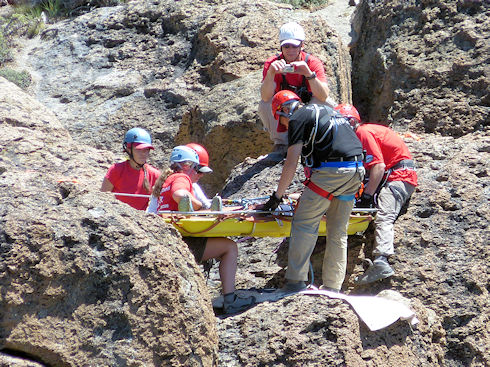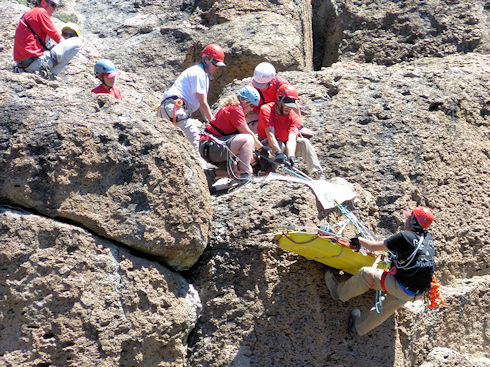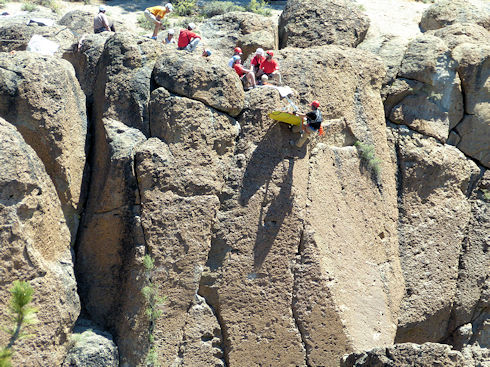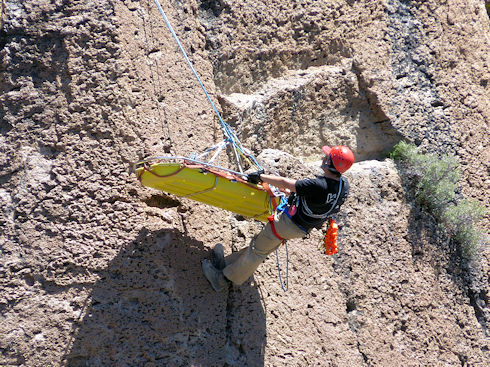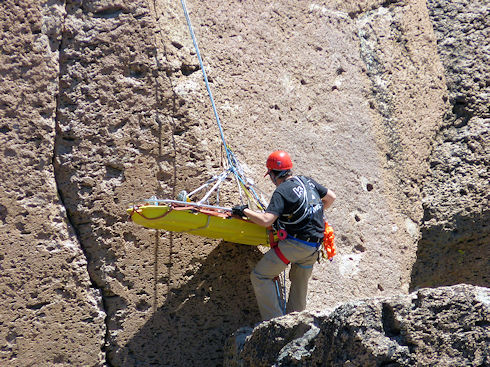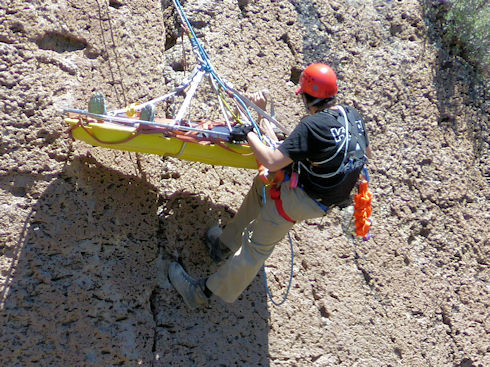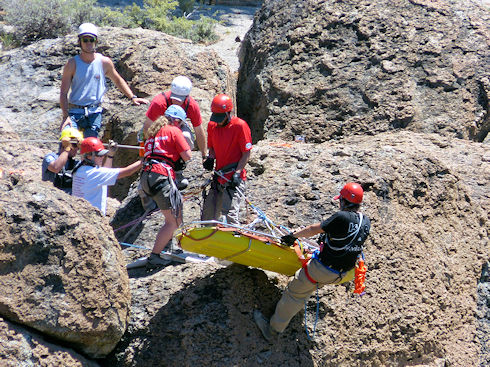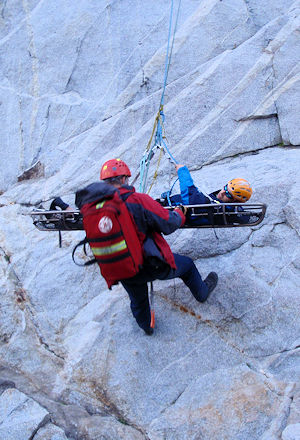
2012 Crystal Crag Injured Climber Rescue
Technical Rescue is a complicated and potential dangerous operation. It takes a lot of training and practice to become proficient ln the techniques involved. The methods are constantly evolving as new ideas are developed and new hardward becomes available. You can do a Google search and find numerous video's showing a variety of methods for accomplishing the same thing. Some show older methods that don't reflect the latest preferred ways.
The emphasis is always on the safety of both the victim and the rescuers. MONO SAR Training will teach you the Team's preferred methods. To become proficient, you need to PRACTICE, PRACTICE, PRACTICE!
The training involves five parts:
The following material will introduce you to the techniques. Training and Practice is required to learn and become proficient in these skills.
High/Vertical Angle Rigging Training - Movie by Jim Gilbreath
Knots, Bends and Systems
The following knots/hitches are required to be known by Mammoth Sheriff's Search and Rescue Team member in order to pass the Technical Rescue Test. The "Animated Knot and Video" links take you to a page on www.animatedknots.com which includes an animated knot tying AND a video if you scroll down the page. Each knot lists alternate names and other information. You can also buy an inexpensive file version for your smart phone or computer.
Wrap 3 - Pull 2 anchor
Wrap 3 - Pull 2 anchor
Long-tail bowline
Long-tail bowline
This Video shows how the Radium Release Hitch is used to transfer the load between the belay line and the main line
Technical Rigging Anchor Basics
Anchors and Anchor Systems
Primer on Climbing Anchors
In rock climbing, an anchor can be any way of attaching the climber, the rope, or a load to rock, ice, steep dirt, or a building by either permanent or temporary means. The goal of an anchor depends on the type of climbing under consideration but usually consists of stopping a fall, or holding a static load.
Depending on the material being climbed, there are many types of protection that can be used to construct the anchor, including natural protection such as boulders and trees, or artificial protection such as cams, nuts, bolts or pitons.
A natural anchor is one that does not require man-made climbing gear. A belay anchor is used as a sole attachment to the cliff face, to support a belay or top rope. A running belay anchor is used as a safeguard in the event of a fall while lead climbing.
Anchor equalization is the process of combining two or more anchors in the build of a single equalized anchor. This is the method used in a redundant belay anchor, as mentioned above. If assembled correctly, the load can be distributed amongst the individual anchors, rather than placing all the load on a single anchor point. This decreases the chance that any of the anchor points will fail, and, if a point does fail, the other(s) should still be able to hold.
ERNST = Equalized, Redundant, Non Extending, Solid, Timely
Litter Handling/Litter Attendant
There are many different ways to package a victim in a stokes litter for transport with the litter attached to a rigging system. The below video's illustrate some of those methods. There are also many different ways to attach rigging to a litter for a high/steep angle lowing or raising. Mono SAR training will teach you the Team's currently preferred methods. The pictures below illustrate some of that training.
Victim packaging - Santa Clara County Sheriff
Patient Packaging - North Richland Hills Fire Rescue
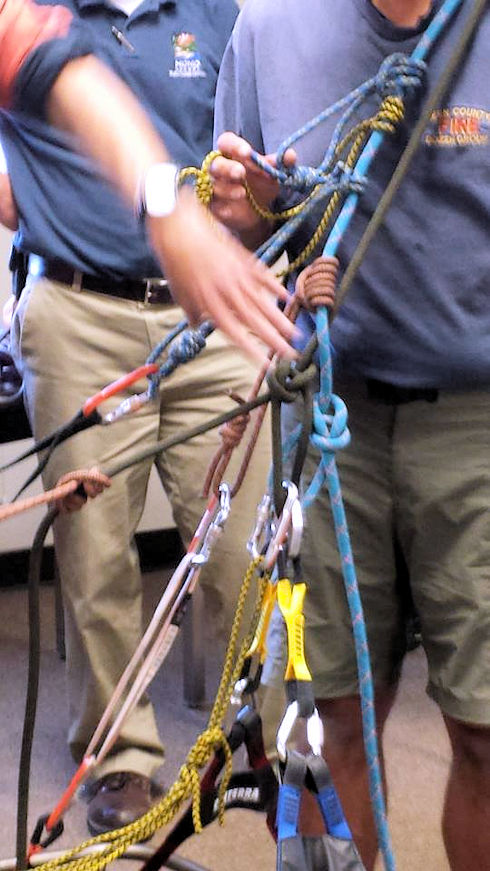
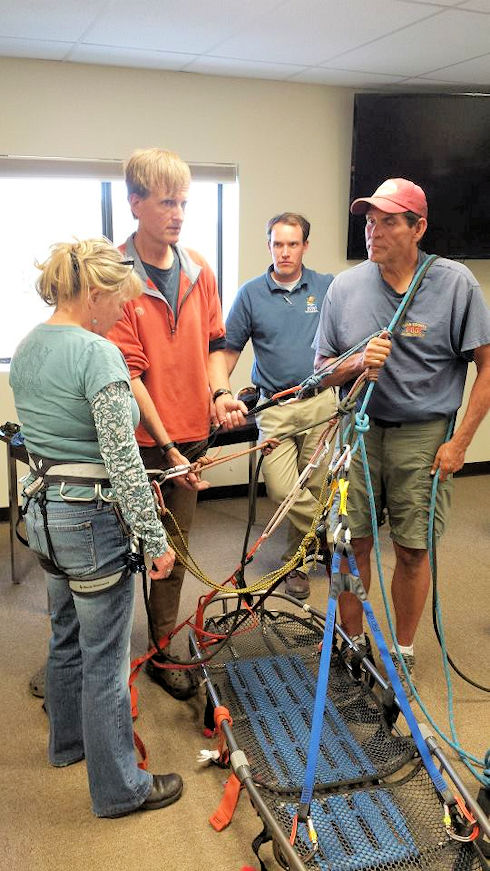
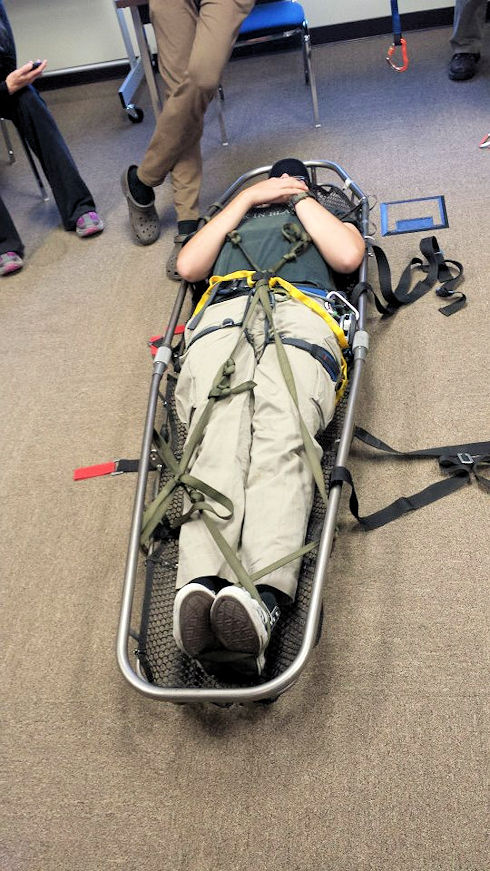
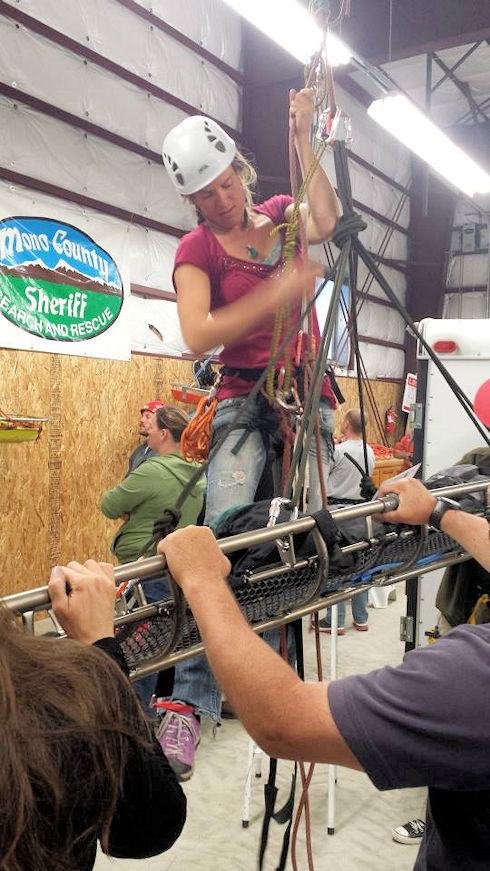
NOTE: Most agencies define "Low Angle" as refering to an environment in which the "on-rope" rescuers are predominately supported by the rescuers themselves and not the rope rescue system. This combines what Mono County Sheriff's Search and Rescue calls "Low Angle" and "Steep Angle".
"High angle" rope rescue refers to an environment in which the "on-rope" rescuers are predominantly supported by the rope rescue system.
Low-Angle Rigging
There are many ways to set up the rigging for a low-angle extraction of a victim where the litter is carried by the rescuers with rigging acting as a safety net. The emphasis is on safety for both the victim and the rescuers. The video illustrates an approach typical of a Fire Department. Mono SAR training will teach you the Team's currently preferred methods. The pictures below illustrate some of that training.
Low/Steep Angle Rescue Video - San Bernardino County Fire Department
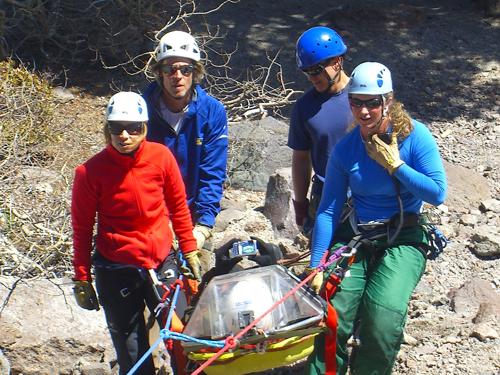
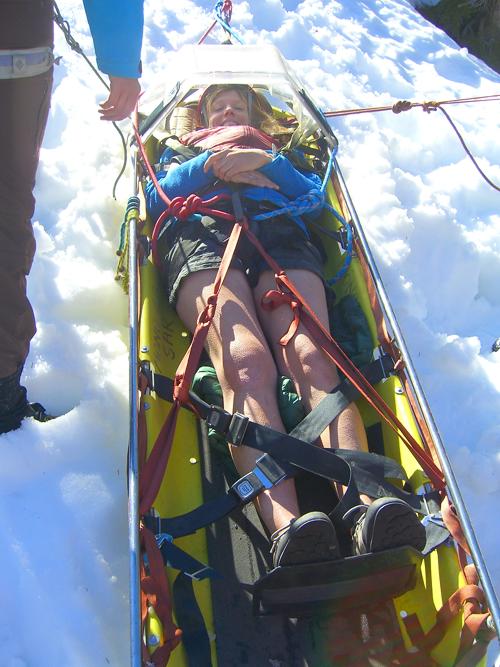
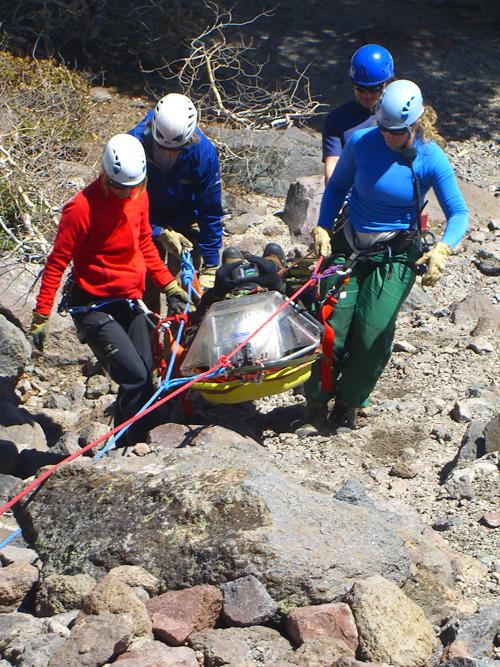
Steep-Angle Rigging
There are many ways to set up the rigging for a steep-angle extraction of a victim where the litter is supported by both a rescuer and the rigging system. The emphasis is on safety for both the victim and the rescuers. Mono SAR training will teach you the Team's currently preferred methods. The video and pictures below illustrate some of that training.
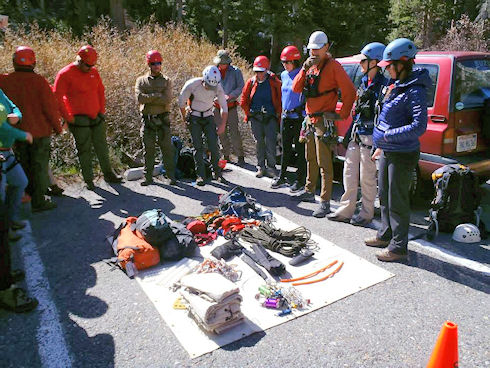
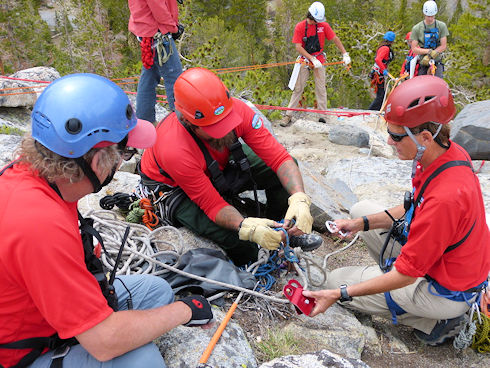
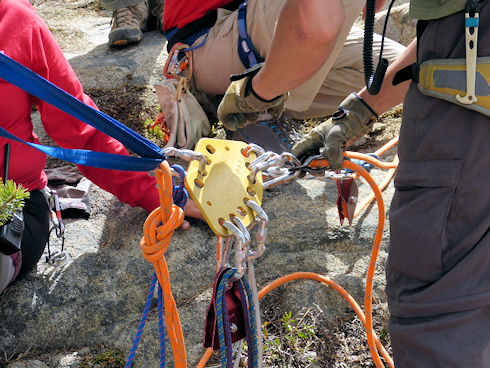
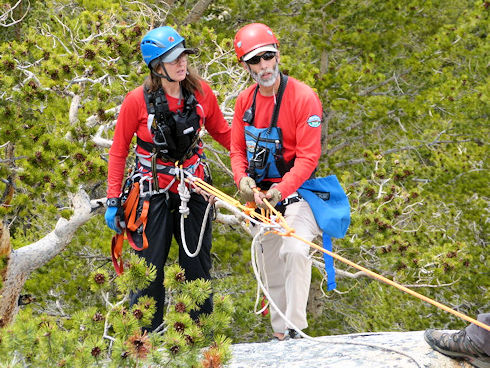
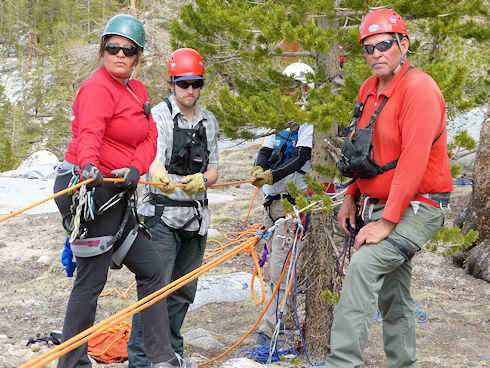
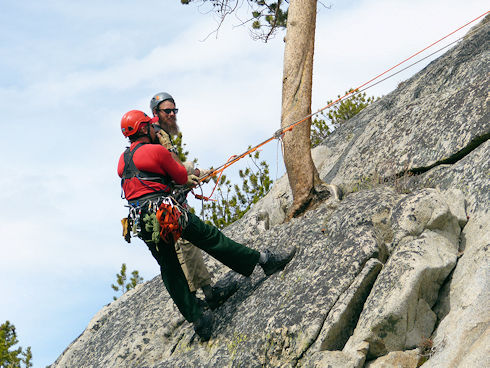
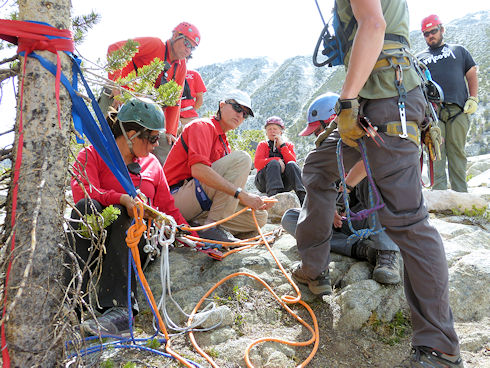
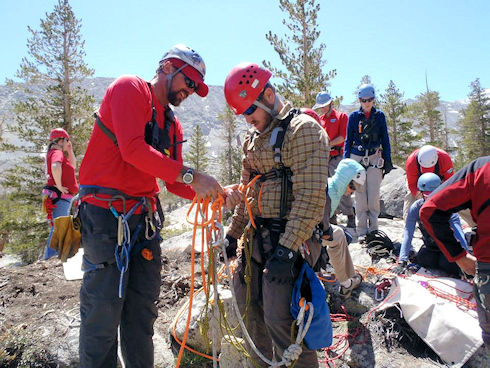
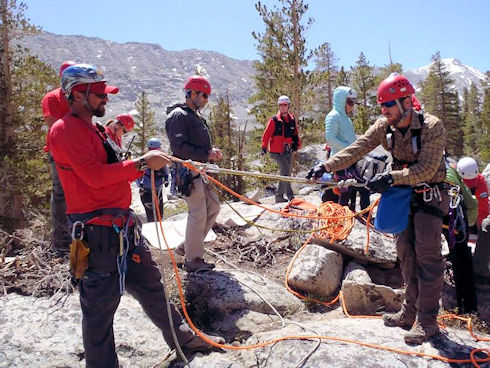
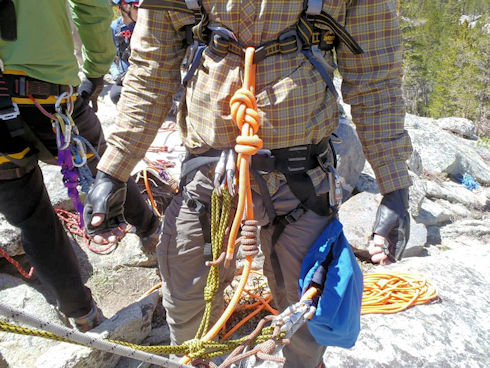

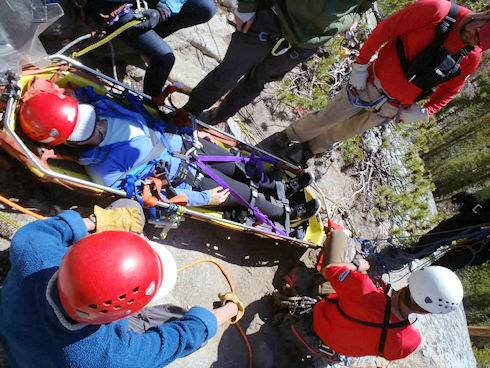
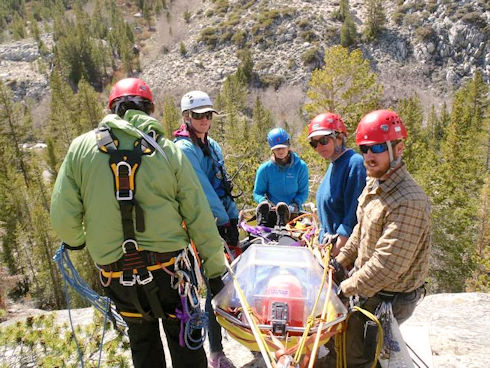
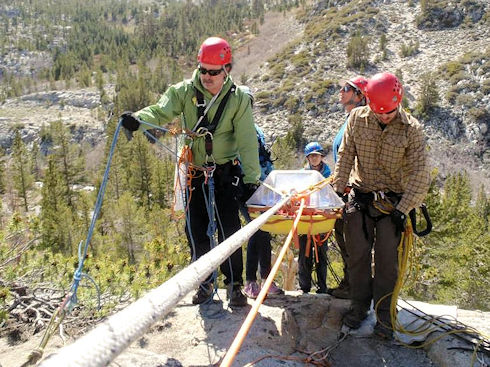
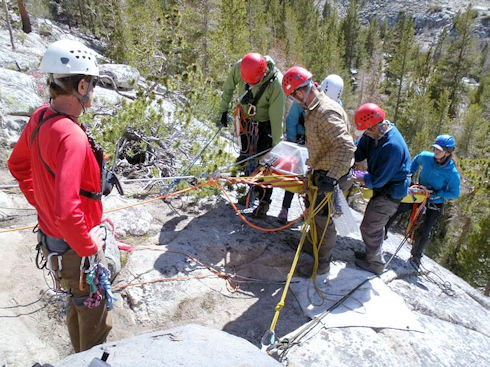
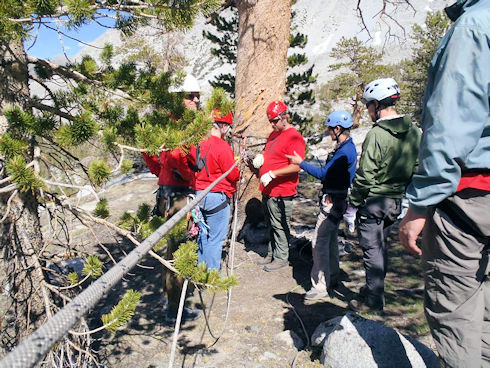
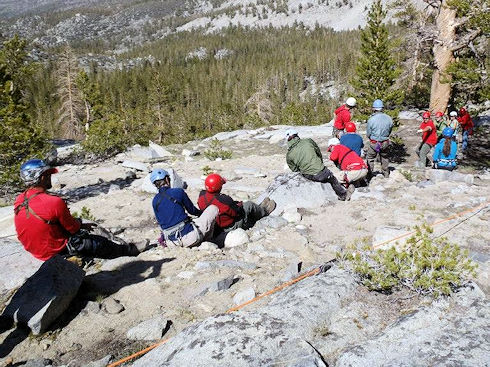
High-Angle/Vertical Rigging
There are many ways to set up the rigging for a high-angle/vertical extraction of a victim where the litter and rescuer (litter attendant) are both supported by the rigging system. High Angle Rigging Training includs reviewing knots used in the rigging, how to rig anchors and the safety and hauling lines, practice retrieving a "victim" by lowering and by raising in a harness, practice retrieving a "victim" by lowering and by raising in a litter. Proper verbal communications via radio headsets is part of the practice. Safety of both the "victim" and the rescuers is stressed. Methods for protecting the ropes from abrasion on the rock are discussed and utilized. Mono SAR training will teach you the Team's currently preferred methods. The video and pictures below illustrate some of that training.
